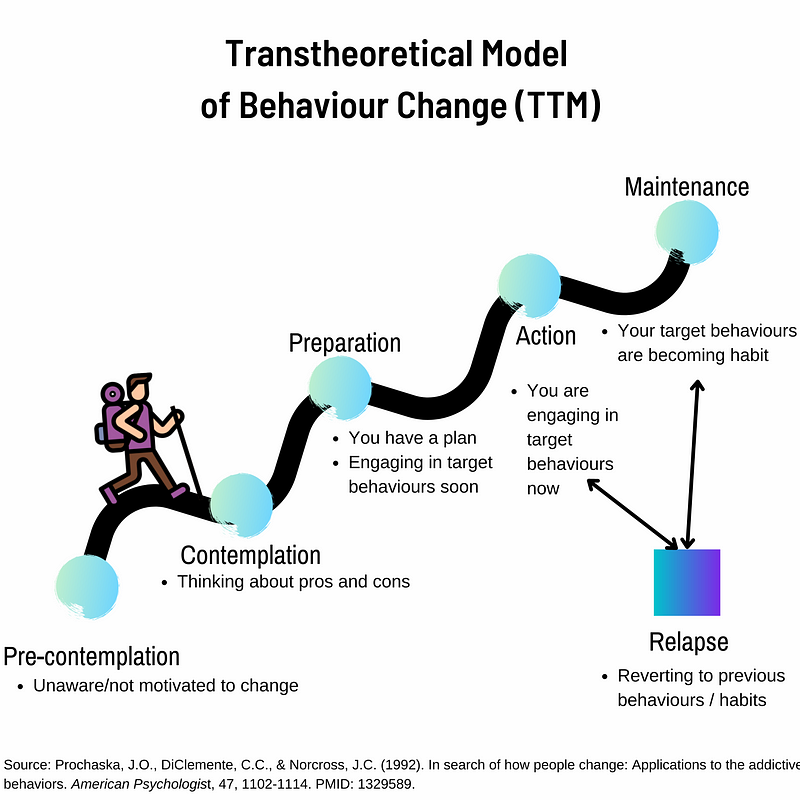Embracing Change: The Journey of Habit Formation and Resilience
Written on
Chapter 1: Understanding the Struggle for Change
Every individual faces challenges in life, particularly when it comes to making lasting changes. You may initiate a new approach that seems promising at first, but then you stumble and feel disheartened. This sense of disappointment often leads to self-criticism, leaving you to wonder about your willpower.
However, consider rethinking your perspective on setbacks. What if these failures are not signs of weakness but rather integral parts of your journey? Embracing this idea can help you better understand behavior change. The Transtheoretical Model of Behavior Change (TTM), developed by James Prochaska and Carlo diClemente, posits that encountering failure is a natural aspect of the process.

Chapter 1.1: The Stages of Change
TTM outlines several stages that individuals navigate in their quest for transformation. These stages help identify barriers to your readiness for change, both for yourself and others.
Pre-Contemplation:
In this initial stage, individuals are often unaware of the need for change. There is typically no urgency to alter behaviors, and the potential for change doesn't even register.
Contemplation:
During contemplation, you start weighing the benefits and drawbacks of adopting new habits. You might reflect on behaviors you'd like to change and confront the fears and assumptions that could impede your progress.
Preparation:
This phase is both exciting and demanding, marking a shift toward actionable steps. For instance, if you're aiming to become a regular morning runner, you might lay out your running gear the night before and set your alarm early. Curiosity fuels your motivation, but so do doubts and fears. Connecting with others who share similar goals can provide invaluable support as you embark on this new journey.

Chapter 1.2: Taking Action
The action phase is where you put your plans into motion. You might wake up early, feeling a mix of nervousness and discomfort. Despite the urge to stay in bed, you push through, donning your running attire and lacing up your shoes. This initial struggle is crucial, as it challenges both your mind and body, fostering the formation of new neural connections and resilience.
As you return from your run, fatigue may set in, but so does a sense of accomplishment. You've triumphed over your former self.
Chapter 2: Maintenance and Beyond
The maintenance phase occurs once a new behavior has been established as a habit. For instance, if you've been running regularly for at least six months, those initial struggles become a distant memory. As you gain endurance, running transforms from a chore into a fulfilling routine.
However, life can disrupt even the best habits. Unexpected events, whether they be professional, personal, or emotional, can shake your commitment. This is where TTM acknowledges the inevitability of relapse. It’s essential to understand that reverting to old behaviors is common, especially in times of stress.
Yet, the beauty of resilience lies in your ability to recognize what you miss about your routines. You may find yourself longing for that invigorating runner's high, prompting you to dust off your running shoes once more. With your gear ready and your alarm set, you prepare to embrace the challenge again.
This video discusses the benefits of cold exposure, shivering, and brown fat, showcasing insights from Dr. Susanna Søberg and Dr. Andrew Huberman.
In this video, a response to Andrew Huberman's advice on fat loss addresses the question: Should you shiver yourself thin?